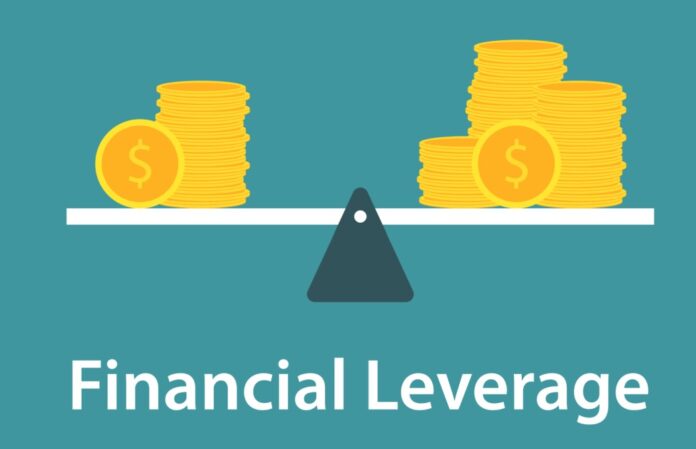Every trader wishes to trade as much money as possible in an attempt to earn more profit. The problem is that not everyone has this type of capital. Some have limited amounts of funds, which they can only use sparingly. This can limit earnings, which is why they tried to come up with a solution.
And they did. Thanks to margin trading, traders now have access to the Foreign Exchange Market. Here, the broker will offer a certain amount of leverage based on the capital (margin) that they had. This capital can help them maintain a certain trading position.
But how does leverage work? How do you choose it and how do you minimize the risks? Are there any important aspects that you should know about trading with leverage? This article should serve as your trading guide.
What Is Leverage?

Leverage is more or less a “loan” that a trader gives you so that you can trade with a higher capital than what you initially put down. Leverage is shown in the form of a ratio, given based on the experience or knowledge of the trader.
There are different ratios. Most beginner traders take a 1:10 or 1:50 ratio, but some can go for leverages as high as 1:1000 or more. It mainly depends on the broker and how much you are willing to spend.
Some brokers keep it at lower limits so that the risk is minimized as much as possible. That being said, a forex broker with high trading leverage can go past 1:500 if they are dealing with an experienced trader.
How Much Leverage Should Traders Use?

The amount of leverage that you use should depend on your experience level, along with how comfortable you are with risk. The higher your risk comfort, the higher you can leverage. For example, leverage can increase your capital times 100, but if you lose the trade, then you lose the leveraged money as well.
If the leveraged capital is lost during the trade, it does not mean that you do not have to pay it back. It means that you have to pay your capital, along with the borrowed capital that you lost. In a way, it works similarly to regular bank loans. If you do not pay it back (i.e., make the right trade or close on time), you risk losing everything.
Most traders find the best results with 1:30 or 1:50 leverages. That being said, if you are not comfortable taking risks, then you may want to trade at lower leverage levels. Go for as little as 1:10 or 1:5, especially if you are just getting started.
The leverage should be chosen based on the following factors:
- The trading strategies that you use
- How much you wish to risk, in case the trade goes wrong
- The amount of Forex trading experience that you have
For the most part, you should not go for higher leverages unless you have a very good eye for following winning trades.
Can Trades Work Without Leverage?

As a trader, you may find yourself asking whether you can trade without leverage or not. While most brokers will urge you to set leverage, you may still trade with the money that you have in your trading account.
The problem is that if you trade without any leverage, the returns are much lower. The same thing applies to any potential losses. Leverage may not be needed only if you are one of the following trader types:
- You trade with more than $100,000 in your account balance. This means that you can comfortably absorb potential losses, without feeling the effects on your trading capital.
- You want to expand your market experience with various strategies using real money.
- You are only trading as a hobby and you do not aim to make a living out of it. You just want to get a potential return on your savings, without taking a risk.
Usually, a good trading broker should be able to advise on whether you can trade without leverage or not. For the most part, if your interest in trading is only limited to curiosity, then leverage may not be what you should be looking into.
Can You Work Your Way Around Leverage Risks?

As mentioned, leverage has the potential to increase your returns. At the same time, you risk losing more than you have. For this reason, you should be very careful about the amount you are trying to leverage.
It is very possible to trade using leverage, without putting your entire capital at risk. You just need to make all the smart decisions. For example, you can start by trading only a limited amount of money from your capital. This means that opening a position using your entire trading volume is the last thing that you should do.
To work your way around the risks of leverage, here are a couple of tips that you may want to keep in mind:
- Keep a low leverage level, to minimize your losses if the trade goes wrong
- Use only around 1-2% of your trading capital, regardless of your position. This way, even if you experience losses, you will not be as affected by them.
- If you find yourself in a losing position, do not try to add more capital to save it. In this case, it pays more to simply cut your losses. Adding more money will just lead to greater losses.
- Use trailing stops to protect your capital and reduce potential downsides
With proper risk management, leverage can turn out profitable and successful for you. What you need to remember is that leverage is customizable and entirely flexible to your needs.
The Bottom Line
Leverage helps you by acting as a deposit for your trades. If you want to enter the trading world, good leverage can help you increase your chances for greater profit, without necessarily adding to your account. Just remember that, like every loan, you need to pay back any potential losses.









